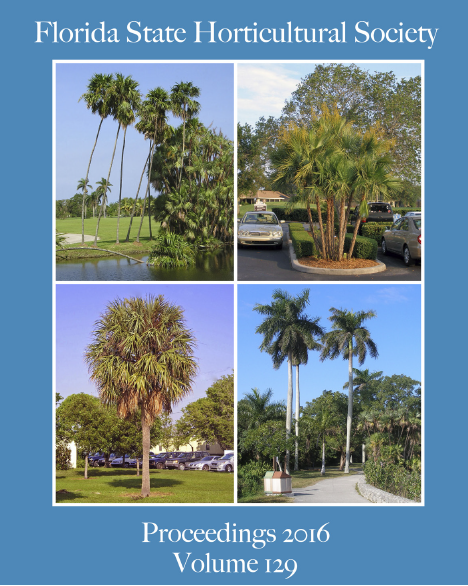Abstract
The cost of seed accounts for nearly 10% of the estimated production cost of chipping potato (Solanum tuberosum) production in Florida. Optimizing seed piece spacing can reduce costs without affecting potato yield. This study evaluated the effects of seed piece spacing on yield, quality, and economic revenue of chipping potato production in north Florida. A field experiment was conduct during the spring of 2013, 2014, and 2016 in Hastings, FL, with a split-plot randomized complete block design. In-row seed piece spacings of 10, 15, 20 (industry standard), 25, and 30 cm were assigned as the main plot and S. tuberosum potato cultivars (Atlantic, Harley Blackwell, and Elkton) as the subplots. Marketable tuber yield ranged between 10.8 and 15.2 Mg·haL1in 2013, 10.1 and12.8 Mg·haL1in 2014, and 9.9 and 19.7 Mg·haL1in 2016. Overall lower yields in 2013 were due to three freeze events early in the season. Widening seed piece spacing resulted in a linear decrease in total and marketable yield in 2013and 2014. Conversely, seed piece spacings of 10and 15 cm showed lower marketable yields in 2016. There was no interaction between in-row spacing and cultivar in any year tested. Cultivars performed variably across years for total and marketable yield and specific gravity. Tuber specific gravity was unaffected by seed piece spacing, except in 2013, when 25 and 30 cm resulted in slightly higher values. There was no significant difference in total and marketable yield between the industry standard seed piece spacing 20 and 25 cm in any year. In-row spacing of 25 cm in 2013 and 30 cm seed piece spacing in 2014 and 2016 provided the greatest economic return. Net revenue can be increased by adjusting the in-row seed piece spacing from the commercial standard of 20 to 25 cm, which reduces production cost without negatively impacting yields.

